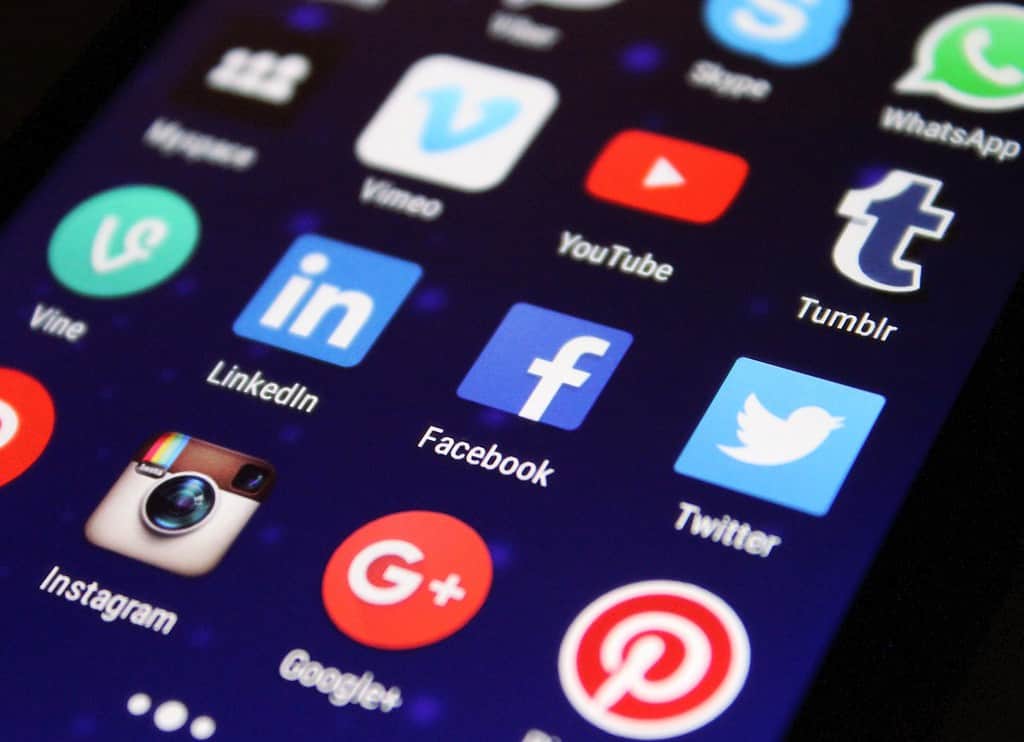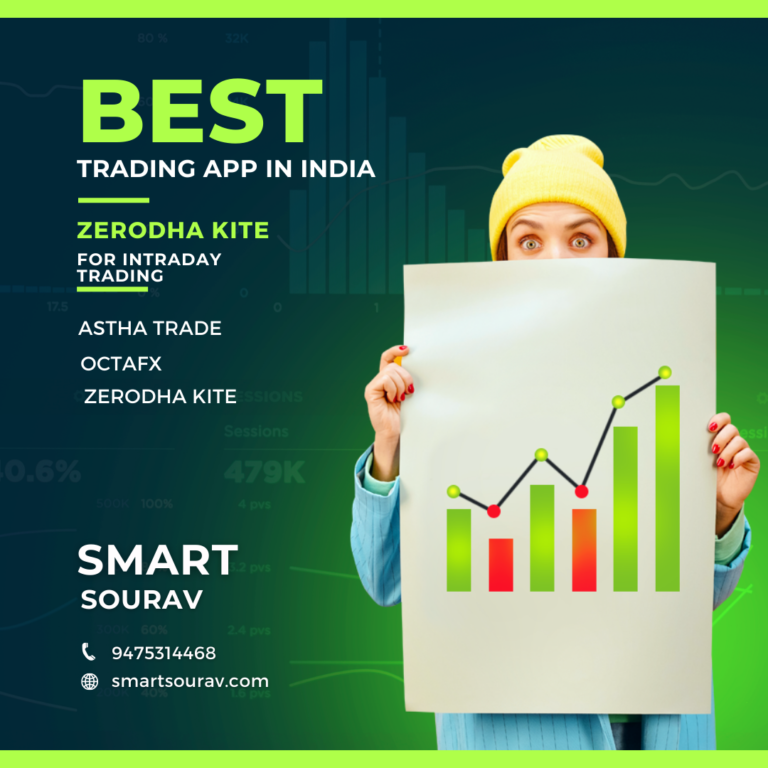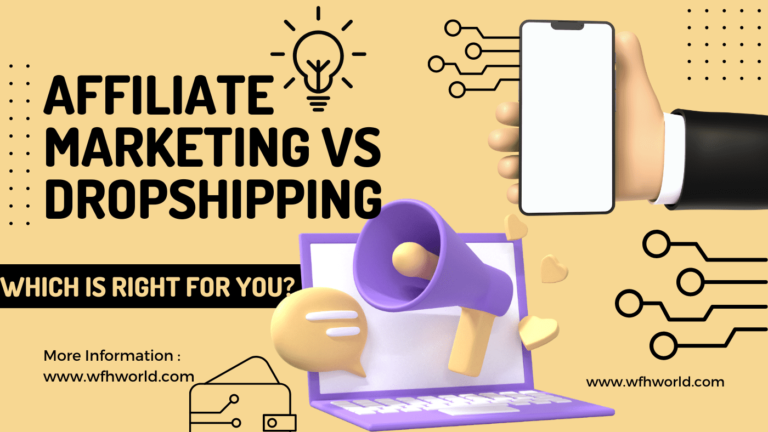Are you tired of your mundane 9-5 job and looking for a way to break free and make money doing something you love?
Do you have a passion for creating content and connecting with people?
If so, becoming a YouTuber may be just what you need.
With over 2 billion monthly active users, YouTube has become the go-to platform for entertainment, education, and inspiration. And the best part? You can make a living doing it. In this blog post, I will take you through the steps of how to become a YouTuber and make money.
Let me tell you, being a YouTuber is a wild ride. You get to share your passion with the world, build a community of like-minded people, and even make money while doing it. But let’s not get ahead of ourselves – it takes some work to get there.
First things first, what exactly is a YouTuber? Well, it’s anyone who creates and publishes videos on YouTube, whether it’s for fun or profit. You can be a gamer, a beauty guru, a vlogger, or anything in between. The sky’s the limit, really.
And if you think making money on YouTube is a pipe dream, think again. There are YouTubers out there who are earning six- or even seven-figure incomes, just by sharing their passion and expertise. Of course, it takes time, effort, and strategy to get there, but it’s definitely possible.
So, how to become a successful YouTuber? That’s what we’ll explore in this article. We’ll cover everything from finding your niche and creating your first video to monetizing your channel and engaging with your audience. And who knows, maybe one day you’ll be the next big thing on YouTube!
How to Become a YouTuber??
Researching Your Target Audience

To become a successful YouTuber, it’s essential to know who your ideal viewers are. These are the people who will be watching your videos, liking, commenting, and sharing them with their friends. So, how do you identify your target audience?
First, consider demographics like age, gender, location, and language. If you’re creating content for gamers, for example, you might target younger viewers (18-24) who are male and living in the United States.
Next, think about interests and behaviors. What do your ideal viewers like to do in their free time? What motivates them to watch YouTube videos? If you’re creating a cooking channel, you might target viewers who enjoy trying new recipes, have a passion for healthy eating, or want to learn new culinary techniques.
To gather data on your audience, you can use various tools and methods. YouTube Analytics is a great place to start – it provides valuable insights into your viewers’ age, gender, location, and more. Social media platforms like Instagram and Twitter can also give you an idea of your followers’ interests and behaviors.
Additionally, you can use surveys to collect feedback from your audience. You can ask questions like “What type of videos do you enjoy the most?” or “What topics would you like me to cover in my next video?” This feedback will help you tailor your content and marketing strategy to meet your audience’s needs and preferences.
For example, let’s say you’re a fitness YouTuber. After analyzing your analytics data, you notice that your viewers are mostly female, aged 25-34, and living in urban areas. You might conduct a survey to find out what topics they’re most interested in, such as weight loss, strength training, or healthy recipes. This information will help you create content that resonates with your audience and attracts new viewers to your channel.
So, take the time to research your target audience and get to know them. It’s a crucial step in building a successful YouTube channel and growing your audience.
Picking Your Niche and Channel Goal
When it comes to creating a successful YouTube channel, one of the most important steps is picking a niche that aligns with your interests, skills, and audience demand. Your niche is essentially the topic or theme of your channel that sets it apart from the millions of other channels on YouTube.
To start, think about what you’re passionate about and what you’re knowledgeable about. It could be anything from beauty and fashion to gaming and technology. The key is to choose a niche that you enjoy and can consistently create content around.
Once you’ve chosen your niche, it’s essential to define your channel’s goal. Do you want to educate your viewers on a particular topic, entertain them with your humor and personality, or inspire them to take action? This goal will guide the type of content you create and help you build a loyal audience.
To get an idea of what type of content your audience wants to see, research your competition and identify gaps in the market. For example, if you’re starting a beauty channel, you might look at the top beauty YouTubers and see what they’re not covering or what topics they’re not exploring. This will give you an opportunity to fill that gap and offer something unique to your viewers.
For example, let’s say you’re passionate about cooking and decide to start a cooking channel. After researching your competition, you notice that many cooking channels focus on healthy recipes, but not many cover cooking for people with dietary restrictions, such as gluten-free or vegan. You could decide to focus on creating delicious recipes that cater to those dietary needs, providing a unique value proposition to your audience.
Brainstorming Ideas and Developing a Content Schedule
Now that you’ve picked your niche and defined your channel’s goal, it’s time to start brainstorming ideas for your videos. This can seem overwhelming, but it’s crucial to creating a successful YouTube channel.
To generate ideas, start by thinking about the topics your audience is interested in and the types of videos that align with your channel’s goal. For example, if your goal is to entertain your viewers, you might create challenge videos, reaction videos, or vlogs.
Another great way to come up with ideas is to look at current trends and hot topics in your niche. For example, if you have a gaming channel, you might create videos about the latest game releases or popular game mods.
Once you have a list of video ideas, it’s time to create a content calendar to plan your video topics and release schedule. A content calendar is a schedule that outlines the videos you plan to create and when you plan to release them. This will help you stay organized and consistent, which is crucial for building a loyal audience.
But don’t worry if things don’t go according to plan. Staying flexible and adapting your content based on audience feedback and current trends is important. For example, if you notice that your viewers are loving a certain type of video, you might create more of that content. Or if you see a new trend emerging in your niche, you could create a video about it to stay current.
Remember, creating great content is a process, and it takes time and effort to get it right. But with the right mindset and strategy, you can create a successful YouTube channel that resonates with your audience.
Choosing the Right Equipment and Setup

Once you’ve figured out your niche and content strategy, it’s time to think about your equipment and setup. You don’t need the most expensive gear to create high-quality videos, but you should invest in a few essentials to make your content stand out.
For example, a good camera can make a huge difference in video quality. You don’t have to spend a fortune on the latest model, but a camera that shoots in 1080p or 4K resolution can make your videos look more professional. A decent microphone is also important to ensure that your audio is clear and easy to hear.
Lighting is another essential factor in creating high-quality videos. Even if you’re shooting with a basic camera, good lighting can make your content look much more polished. You can use natural light or invest in some inexpensive lighting kits to brighten up your videos.
Once you have your equipment, it’s important to set up your filming location and create a consistent brand aesthetic. Choose a location with good lighting and minimal background noise to ensure that your videos are high quality and easy to watch. You can also use props or create a branded background to make your videos more visually appealing.
Finally, make sure you optimize your video quality and audio for maximum engagement. Experiment with different camera angles and framing techniques to keep your viewers interested, and make sure your audio is clear and easy to hear. By choosing the right equipment and setting up your filming location correctly, you’ll be well on your way to creating high-quality content that your viewers will love.
Building Your YouTube Channel Page

When it comes to building your YouTube channel page, first impressions matter. Your channel page should reflect your brand and niche in a visually appealing and informative way.
One of the most important elements of your channel page is the channel banner and profile picture. These should be eye-catching and relevant to your niche. For example, if your channel is about beauty, your banner and profile picture could showcase your favorite makeup looks.
Your channel description is another crucial component. This is your opportunity to tell viewers what your channel is all about and what they can expect to see. Be sure to include your niche and value proposition, such as “providing helpful makeup tutorials for beginners.”
Don’t forget to add links to your website, social media, and other relevant channels to increase your reach and connect with your audience outside of YouTube.
Creating and Uploading Your First Video
Congratulations, you’re ready to create your first YouTube video! This is an exciting and important step in your journey to becoming a successful YouTuber. Here are some tips for creating and uploading your first video:
Planning and Scripting Your First Video
Before you start filming, you’ll want to plan and script your video. This will help you stay on topic, organize your thoughts, and make the most of your time. Your first video should introduce yourself and your channel, as well as give your viewers an idea of what they can expect from your future videos. Be sure to speak clearly and confidently, and don’t be afraid to inject some personality and humor into your video.
Filming and Editing Your Video
When it comes to filming, you don’t need to have a fancy camera or equipment. A smartphone or basic camera will do just fine, as long as you have good lighting and sound. You can also use free or affordable video editing software, like iMovie or Adobe Premiere Rush, to edit your video and add music, graphics, and transitions.
Uploading and Optimizing Your Video
Once you’ve finished editing your video, it’s time to upload it to your YouTube channel. Make sure to choose a descriptive title and include relevant keywords in your video’s tags and description to optimize it for search and discovery. You can also promote your video on your social media channels and other relevant communities to increase visibility and engagement. And remember, the more you create and upload, the more you’ll learn and improve over time.
Promote Your Channel

Promoting your YouTube channel is crucial for growing your audience and increasing your video views and engagement. Without promotion, your videos may go unnoticed, and you may not reach your target audience. That’s why it’s essential to promote your channel on various platforms and through various methods.
There are several ways to promote your YouTube channel effectively. One of the most effective ways is to leverage social media. Share your videos on your social media accounts and relevant groups or communities to reach a broader audience. Collaborating with other creators in your niche can also help you reach new viewers.
Another effective method is to optimize your videos for search engines by using relevant keywords and tags in your video title, description, and tags. This can help your videos appear higher in search results, increasing your visibility and reach.
You can also use paid promotion methods, such as YouTube ads or influencer marketing, to reach a more targeted audience and increase your visibility. For instance, you can partner with an influencer in your niche to promote your videos to their audience.
Overall, promoting your channel requires a strategic approach and consistency. By utilizing various promotional methods and consistently sharing your content, you can reach a wider audience and grow your channel.
Monetizing Your Channel
To monetize your YouTube channel, you need to join the YouTube Partner Program (YPP), which allows you to enable monetization features such as displaying ads on your videos. To be eligible for YPP, you need to meet certain requirements such as having at least 1,000 subscribers and 4,000 hours of watch time in the past 12 months.
Once you’re accepted into YPP, you can choose from various monetization strategies such as ads, sponsorships, and merchandise. Ads are the most common and straightforward way to earn money, but you can also earn from sponsorships or collaborations with brands, or even create and sell your own merchandise.
However, to earn a significant amount of money from your channel, you need to focus on building your audience and increasing engagement. This means creating high-quality content that resonates with your viewers, promoting your channel through various channels, and engaging with your audience through comments and social media. The more engaged and loyal your audience is, the higher your earning potential becomes.
Staying in Touch With Your Community
Creating and uploading your first video is just the first step. To truly build a successful YouTube channel, you need to engage with your community and create a loyal following. This is where staying in touch with your audience comes in.
One of the best ways to do this is by engaging with your viewers through comments, live streams, and social media. Responding to comments shows that you value your audience’s opinions and appreciate their support. Hosting live streams allows you to interact with your audience in real-time, answering questions and getting to know your viewers on a personal level. And using social media platforms like Twitter and Instagram gives you another way to connect with your fans outside of YouTube.
Collaborating with other YouTubers is another great way to build your community and reach a wider audience. By working together, you can introduce each other’s channels to your respective audiences, collaborate on videos, and create a community around your channels.
Lastly, don’t forget to listen to your audience’s feedback and make improvements based on their needs and interests. Pay attention to which videos perform well and which don’t, and adjust your content accordingly. This shows your viewers that you value their opinions and are committed to providing them with the best content possible.
Remember, building a successful YouTube channel is all about building a community and connecting with your audience. So, take the time to engage with your viewers, collaborate with other creators, and make improvements based on feedback. Your community will grow, and so will your channel’s success!
Conclusion: The Future of Being a YouTuber
Congratulations, you’ve made it to the end of this guide on how to become a YouTuber! By now, you should have a solid understanding of the key steps involved in building a channel from scratch, including creating a visually appealing and informative channel page, producing high-quality videos, and monetizing your content.
Starting a YouTube channel can be a daunting task, but with the right tools and techniques, you can make it a reality. Whether you want to share your passion for cooking, gaming, or makeup, there’s an audience out there waiting to discover your content.
Remember, building a successful YouTube channel takes time and effort, so be patient and stay committed to producing quality content that resonates with your audience. And don’t forget to engage with your community and collaborate with other creators to expand your reach and build a loyal fanbase.
So go ahead, start your channel, create your first video, and share your voice with the world! Who knows, you could be the next big YouTube star. Good luck on your journey to becoming a successful YouTuber!
How to Become a YouTuber FAQs
How Do YouTubers Get Paid?
YouTubers can earn money through various monetization methods on the platform. Here are some common ways YouTubers get paid:
Ad Revenue: The primary source of income for many YouTubers is through ad revenue. When you monetize your videos and enable ads, YouTube displays advertisements before, during, or alongside your content. You earn a portion of the ad revenue generated by those ads. The specific amount varies depending on factors like the number of ad impressions, ad formats, viewer engagement, and advertiser budgets.
YouTube Partner Program: To monetize your videos and earn ad revenue, you need to join the YouTube Partner Program (YPP). YPP has certain eligibility criteria, such as reaching 1,000 subscribers and 4,000 watch hours within the past 12 months, as of my knowledge cutoff in September 2021. Once accepted into the program, you can enable monetization on your videos and start earning from eligible ad placements.
Channel Memberships: Eligible YouTubers can offer channel memberships to their subscribers, where viewers pay a monthly fee (typically $4.99) to access exclusive perks, badges, emojis, or other member-only content. You earn a portion of the membership fees paid by your subscribers.
Merchandise Sales: Many YouTubers create and sell merchandise related to their channel, such as clothing, accessories, or branded merchandise. You can set up an online store or use platforms like Teespring or Merch by Amazon to sell your merchandise. You earn money from the sales of your merchandise, minus the production and fulfillment costs.
Sponsorships and Brand Deals: As your channel grows, you may have opportunities to collaborate with brands and secure sponsorships or brand deals. This involves promoting a product or service in your videos or through dedicated sponsorship segments. You negotiate payment terms with the brand, and compensation can vary based on factors like your channel’s reach, engagement, and the scope of the partnership.
Crowdfunding: Some YouTubers choose to rely on crowdfunding platforms like Patreon, Ko-fi, or Buy Me a Coffee. Viewers can contribute a voluntary amount to support their favorite creators. In return, creators may offer exclusive perks or additional content to their supporters.
Is Being a YouTuber Hard?
Yes, being a YouTuber can be hard. It takes a lot of time, effort, and dedication to create high-quality content that will attract viewers and grow your channel. You will also need to be able to handle criticism and negative feedback, as well as deal with the pressures of being in the public eye.
Here are some of the challenges that YouTubers face:
Time commitment: It takes a lot of time to create high-quality videos. This includes coming up with ideas, researching topics, filming, editing, and promoting your videos.
Equipment and software costs: YouTubers need to invest in good equipment and software to create high-quality videos. This can be expensive, especially if you are just starting out.
Competition: There are millions of YouTubers on the platform, so it can be difficult to stand out from the crowd.
Criticism and negative feedback: YouTubers are constantly exposed to criticism and negative feedback from viewers. This can be tough to deal with, especially if you are not used to it.
Pressures of being in the public eye: YouTubers are often in the public eye, which can be a lot of pressure. They may be asked for autographs or photos, and they may have to deal with stalkers or other unwanted attention.
Despite the challenges, being a YouTuber can also be very rewarding. It can be a great way to share your passion with others, connect with people from all over the world, and make a living doing something you love.
Do YouTubers Get Paid if You Skip Ads?
YouTubers generally earn a portion of ad revenue when viewers watch or interact with ads on their videos. However, the specific earning mechanism can vary depending on the ad format and viewer behavior. Here’s how it typically works:
Skippable Ads: Skippable ads are the most common ad format on YouTube. These ads allow viewers to skip the ad after a few seconds. YouTubers earn revenue if viewers watch a certain portion of the ad before skipping or if they engage with the ad by clicking on it. If a viewer skips the ad before the specified time, the YouTuber may not earn any revenue for that particular ad view.
Non-Skippable Ads: Non-skippable ads are ads that viewers are required to watch in their entirety before the video can be viewed. YouTubers generally earn revenue from non-skippable ads, as viewers are obligated to watch the full ad.
Engagement with Ads: If viewers click on ads or engage with them in some way, such as by interacting with the ad overlay, the YouTuber may earn additional revenue. This interaction indicates a higher level of engagement and can lead to increased earnings.
Does YouTube Pay Every Month?
Yes, YouTube pays its creators on a monthly basis. The payment is issued via electronic funds transfer (EFT) or a check, depending on the creator’s preferred method of payment and the country they reside in.
However, there are a few requirements that need to be met before creators can start earning money from their videos. These requirements include:
Having at least 1,000 subscribers;
Having at least 4,000 hours of watch time in the past year;
Enabling monetization on their channel.
Do YouTubers Get Paid for Old Videos?
Yes, YouTubers can earn money from their old videos as long as those videos are still generating views and ad revenue. Once a YouTube video is published and monetized, it continues to generate income through ads, even if it’s been on the platform for a long time. The earning potential of old videos depends on factors such as the popularity of the video, the number of views it receives, and the advertisers’ budgets.
What qualifications do you need to be a YouTuber?
There are no formal qualifications required to be a YouTuber. However, there are some skills and qualities that can help you be successful on the platform. These include:
Creativity: YouTubers need to be creative in order to come up with ideas for videos that will engage viewers.
Communication skills: YouTubers need to be able to communicate effectively with their audience through their videos.
Technical skills: YouTubers need to be able to use video editing software and other technical tools to create high-quality videos.
Patience: Building a successful YouTube channel takes time and effort. YouTubers need to be patient and persistent in order to achieve their goals.
How much does YouTube pay for 1,000 views?
YouTube does not pay a fixed amount for 1,000 views. The amount of money that a YouTuber earns per view varies depending on a number of factors, including the type of ad that is displayed, the country where the viewer is located, and the creator’s overall watch time and subscriber count.
In general, YouTubers earn between $0.10 and $3.00 per 1,000 views. However, it is not uncommon for YouTubers to earn less than $0.10 per view or more than $3.00 per view.






